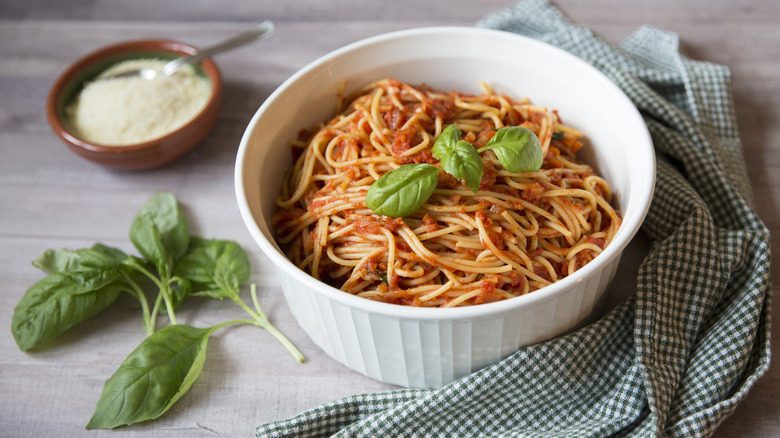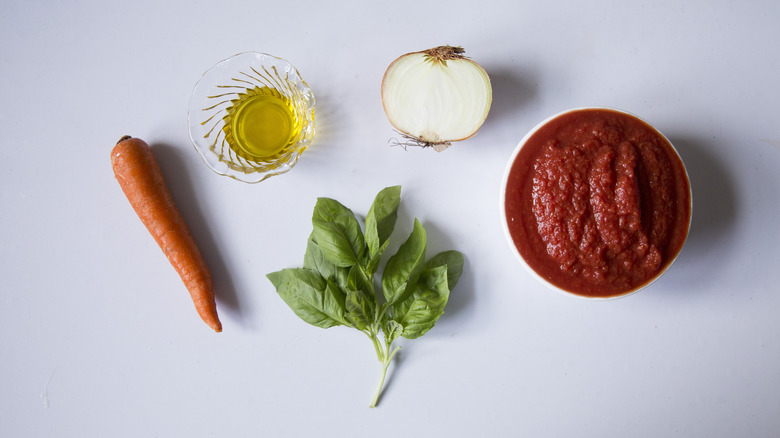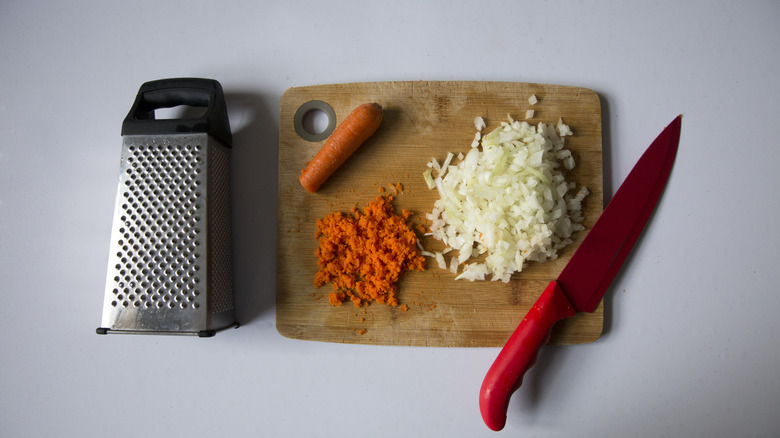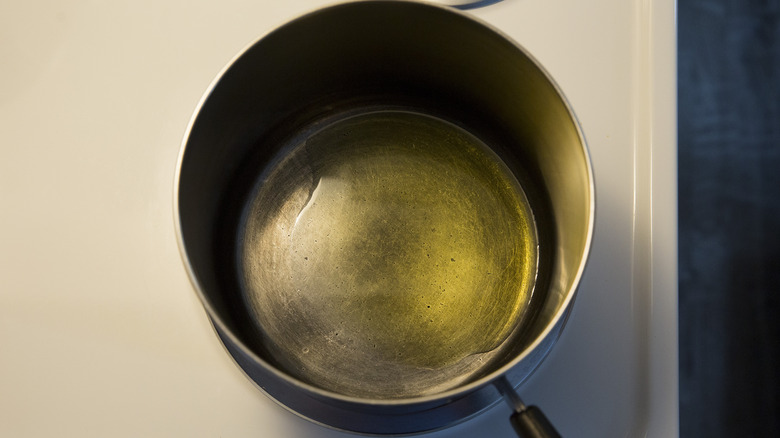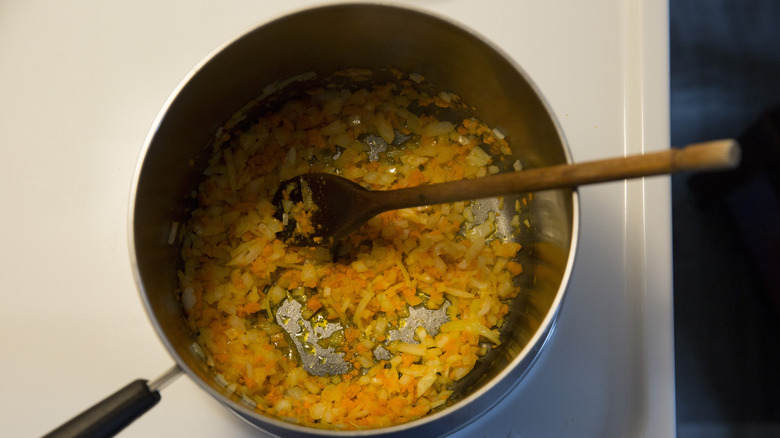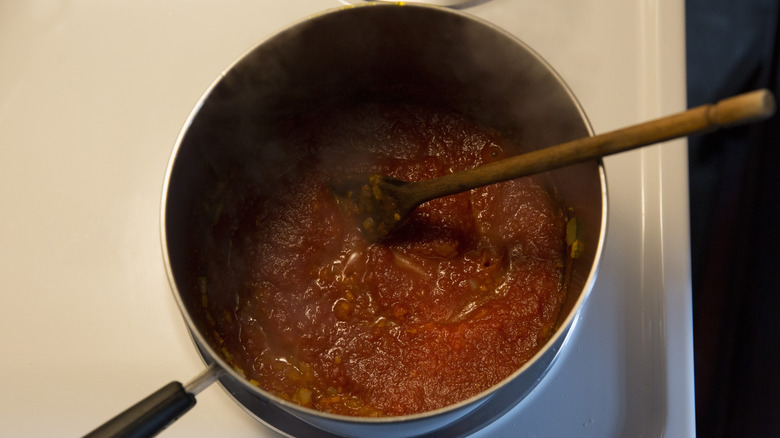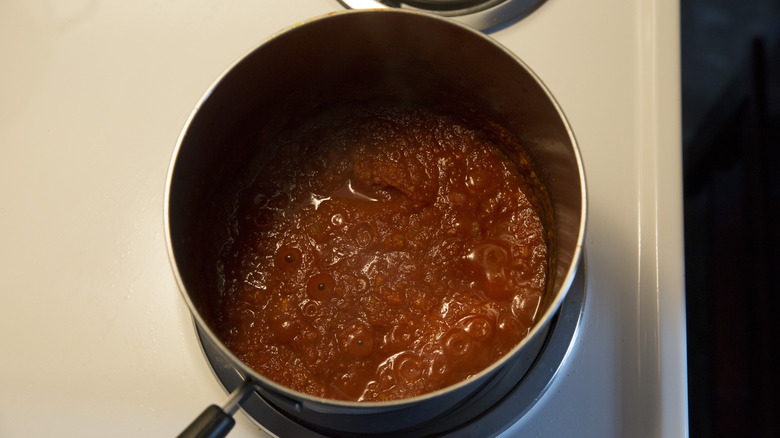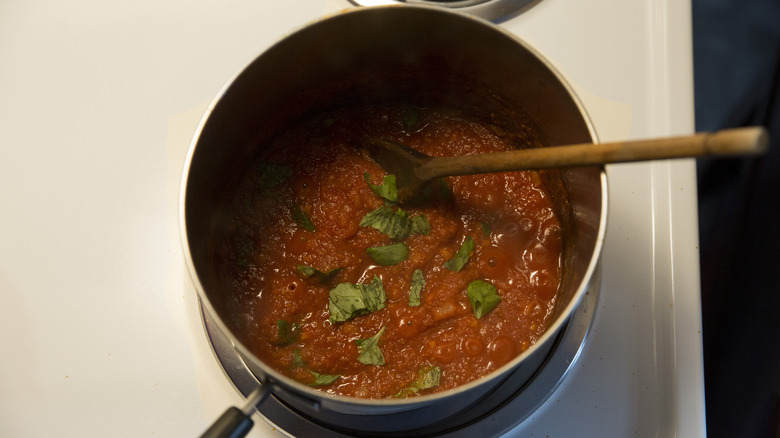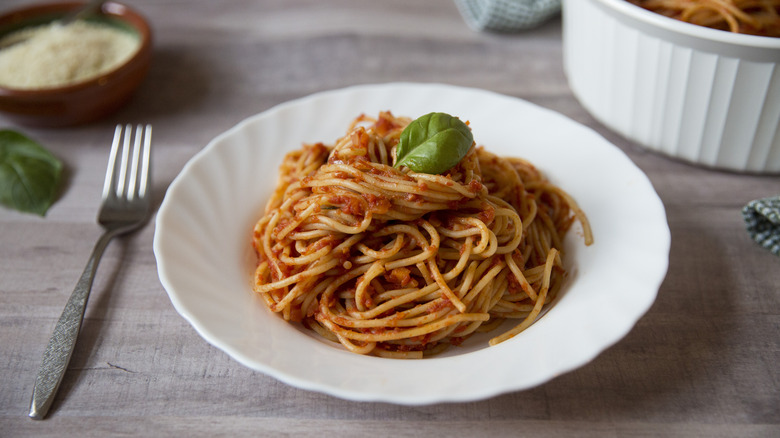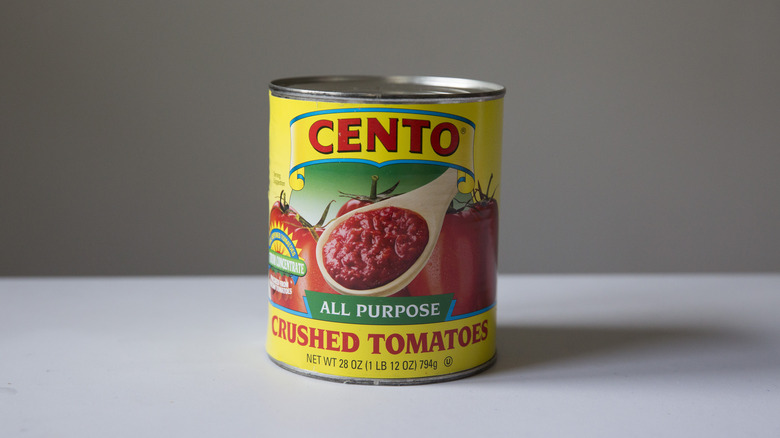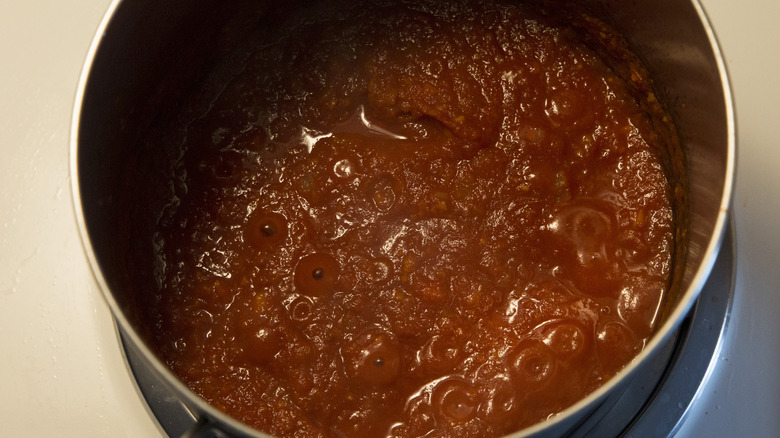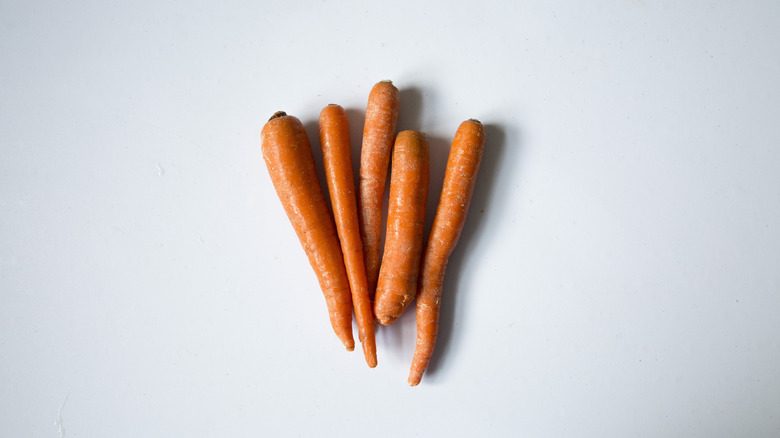Special Italian Sunday Sauce Recipe
What's more Italian than tomato sauce? This classic recipe is a foundation of Italian cuisine and is used to dress countless versions of pasta, baked dishes, pizza, fish, vegetables, and meat. Italian Sunday sauce is a recipe close to Italian and Italian-American hearts alike. While Italians get together for Sunday lunch and Americans prefer Sunday dinner, in both cases pasta with sauce is part of this tradition that brings family together week after week.
Recipe developer Michelle Bottalico grew up in an Italian-American family and later spent over a decade living in Italy. She harnessed her knowledge from both countries to create a classic recipe for Italian Sunday sauce. Depending on who you ask, making sauce is intimidating or incredibly easy. Bottalico shares, "When I was new to living in Italy, I asked someone for their tomato sauce recipe at a Sunday lunch and they laughed at me. It's considered to be something very basic. I find that making a good sauce isn't difficult, but it does require some technique to get right, as well as high quality ingredients, which may be trickier to find depending on where you live."
One secret is the addition of a humble special ingredient Bottalico learned about from her Grandfather: carrot. This subtly sweet vegetable balances out the acidity of certain canned tomatoes and helps it taste just right. Read on to learn the basic techniques to make a delicious Italian sauce in 40 minutes.
Gather your special Italian Sunday sauce ingredients
Some people like to add ingredients like vegetables, meat, or wine to their tomato sauce, but the classic version is actually quite simple. There's beauty in this simplicity, because when each ingredient is delicious, it doesn't need much to shine. For this sauce, you will need extra virgin olive oil, onion, carrot, canned crushed tomatoes, salt, and fresh basil leaves. Some canned tomatoes are more acidic than others, so a pinch of sugar is an optional ingredient to have on hand if you find your carrot isn't providing the level of sweetness you need to balance the acidity of your tomatoes.
Use the best quality tomatoes and olive oil you can afford. Bottalico says: "The quality of your ingredients will affect the taste of your sauce. It was very easy to find delicious tomatoes and olive oil in Italy, but once I moved back to the U.S., I noticed that I didn't like my sauce unless I was careful to find good tomatoes and olive oil and adjust the sauce for sweetness.
Step 1: Prepare the vegetables
Peel and finely grate the carrot, and peel and finely chop the onion.
Step 2: Heat the olive oil
Heat the olive oil in a large saucepan on medium.
Step 3: Cook the onion and carrot
When the oil is hot (it's hot when a small drop of water splashed into the pan sizzles), add the onion and carrot and let them cook for 5-6 minutes, stirring occasionally.
Step 4: Add and cook the tomatoes
Pour the tomatoes into the pan, add salt, and raise the heat to high to bring the mixture to a boil.
Step 5: Simmer the sauce
As soon as it boils, set the heat to low and let the tomatoes gently simmer for 20 minutes, stirring occasionally. It will reduce and become denser.
Step 6: Add basil and taste
Rip the fresh basil leaves into small pieces and stir them into the sauce about 2 minutes before it's finished cooking. Taste the sauce at the end and if the carrot wasn't very sweet, add an optional pinch of sugar to balance the acidity.
Step 7: Serve your special Italian Sunday sauce
Serve immediately with pasta.
What kind of canned tomatoes can I use to make tomato sauce?
This recipe calls for canned crushed tomatoes to make it easier, but you can use canned whole tomatoes too. Look for whole peeled plum tomatoes, especially San Marzano tomatoes if you can. You will need to crush them yourself by blending the tomatoes before you add them to the pan or by passing the sauce through a food mill at the end before you add the basil. For a more rustic result, just roughly chop the whole canned tomatoes before you use them, or crush them by hand with a potato masher when the sauce is almost done cooking.
Purchased tomato passata, which is sold in glass jars, is another excellent choice. Passata is made from peeled and seeded tomatoes that have been passed through a sieve, so unless it's marked "rustica," a version which leaves some texture in, it will give you a very smooth result.
In the height of summer when they are ripe and in season, you can make your own passata with fresh tomatoes if you want to go all out. You can also make sauce with the same weight of roughly chopped fresh plum tomatoes without making passata first.
How long should I cook tomato sauce?
Tomato sauce made with canned or jarred tomatoes should cook at a low simmer for a minimum of 20 minutes. However, you can certainly cook it for longer. Simmering it for 30 minutes or 1 hour will make it more flavorful.
If you have more time to devote to your sauce, you can achieve a very flavorful result by simmering it all day. Start it on Sunday morning and it will be ready to eat by mealtime. Choose the lowest heat you can without losing the very gentle bubbles that show you the sauce is simmering. Besides making your house smell wonderful, the long simmer will produce a richer, more complex flavor. Bottalico says: "Italian families I knew in Italy put the sauce on early in the morning and let it cook very slowly until lunch time. This works well with a larger batch of sauce to account for some evaporation."
Why do you add carrot to tomato sauce?
Bottalico shares: "When I was younger, my grandfather shared his 'secret' to the perfect sauce with me, which was one sweet ingredient: grated carrot. At the time I thought he invented it himself, but it turns out it's an Italian tradition that not everyone knows about. Make sure you finely grate the carrot so it doesn't make the sauce chunky, unless you're going for a rustic effect."
Canned tomatoes can vary in acidity, and if the taste is leaning towards too acidic, the sauce won't taste quite right. A carrot adds a subtle sweetness to the sauce that balances out this acidity without giving it an obviously sweet taste, like too much sugar can.
The sweetness of carrots can vary depending on growing and harvesting conditions, so taste your sauce near the end of the cooking time. If your carrot isn't very sweet and you find the sauce still has an acidic taste, you can add a pinch of sugar to balance the flavor. You'll only need a little to achieve this, so be conservative.
Special Italian Sunday Sauce Recipe
This traditional Italian Sunday sauce couldn't be much simpler. With quality tomatoes and olive oil, you can make a pasta sauce to bring the family together.
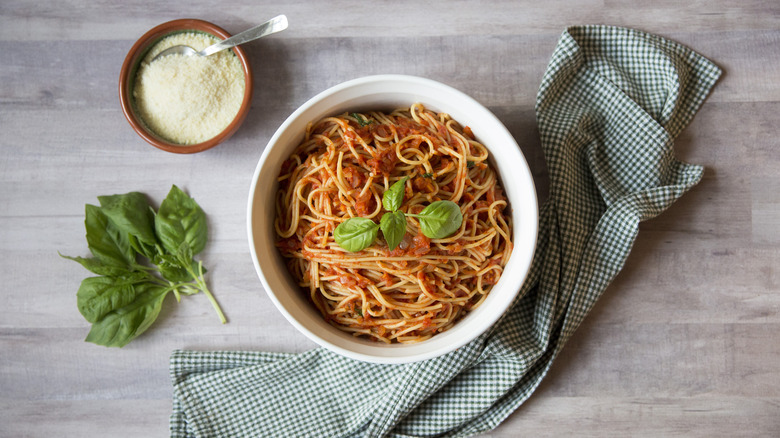
Ingredients
- ¼ cup extra virgin olive oil
- ½ yellow onion
- 1 medium carrot
- 1 28-ounce can of crushed tomatoes
- 1 teaspoon salt or to taste
- 8-10 basil leaves
Optional Ingredients
- 1 pinch of sugar
Directions
- Peel and finely grate the carrot, and peel and finely chop the onion.
- Heat the olive oil in a large saucepan on medium.
- When the oil is hot (it's hot when a small drop of water splashed into the pan sizzles), add the onion and carrot and let them cook for 5-6 minutes, stirring occasionally.
- Pour the tomatoes into the pan, add salt, and raise the heat to high to bring the mixture to a boil.
- As soon as it boils, set the heat to low and let the tomatoes gently simmer for 20 minutes, stirring occasionally. It will reduce and become denser.
- Rip the fresh basil leaves into small pieces and stir them into the sauce about 2 minutes before it's finished cooking. Taste the sauce at the end and if the carrot wasn't very sweet, add an optional pinch of sugar to balance the acidity.
- Serve immediately with pasta.
Nutrition
| Calories per Serving | 196 |
| Total Fat | 14.1 g |
| Saturated Fat | 2.0 g |
| Trans Fat | 0.0 g |
| Cholesterol | 0.0 mg |
| Total Carbohydrates | 17.4 g |
| Dietary Fiber | 4.5 g |
| Total Sugars | 10.1 g |
| Sodium | 567.3 mg |
| Protein | 3.6 g |
